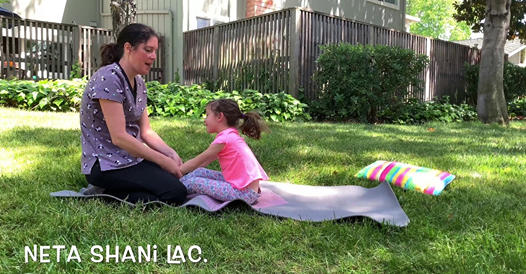In our fast-paced world, we often underestimate the simple power of touch. Yet, from the moment we’re born, physical contact plays a crucial role in our development, well-being, and emotional state.
Let’s explore why touch is so powerful and how it can benefit you and your child:
1. Building Confidence and Security: A gentle touch, a warm hug, or a playful high five can communicate love, acceptance, and support. This, in turn, helps children feel confident and secure in their environment, fostering a sense of well-being that impacts all areas of their lives.

2. Communication Beyond Words: Touch is a powerful nonverbal language. A hug after a scrape speaks volumes of comfort, while a reassuring hand on the shoulder can offer silent encouragement. For children who struggle with expressing themselves verbally, touch can be an invaluable tool for communication.
3. Promoting Relaxation and Sleep: Physical touch can have a calming effect. Studies have shown that massage therapy can lower stress hormones and promote better sleep. A gentle head massage or back rub before bed can help your child unwind and drift off to sleep more easily.
4. Reducing Anxiety and Calming Fears: During times of anxiety or fear, physical comfort can be a powerful soother. Holding your child close or offering a comforting touch can help them feel safe and secure, reducing their anxiety levels.
5. Strengthening the Bond Between Parent and Child: Regular, positive touch is essential for building strong parent-child relationships. It fosters a sense of connection and intimacy that can last a lifetime.

The Magic Goes Both Ways!
Don’t underestimate the power of touch you receive from your child. A spontaneous hug, a hand-drawn picture, or even a “messy” attempt at a massage can be incredibly heartwarming and reassuring. These gestures express their love and appreciation in their own unique way.
Turning “I Need Attention” into a Powerful Sensory Experience
As a sensory processing specialist, I often see how touch can be a double-edged sword for children. Some kids, especially those with ADHD, crave a more dynamic sensory experience. Imagine a rocking motion instead of a still massage – this provides the deep pressure input they might be seeking. Other children might be hypersensitive and require a gentler touch, a “grounding” sensation that helps them feel calm and regulated.
The Secret Ingredient: Communication
The key to unlocking the power of touch lies in communication. By asking questions and helping children express their needs – “more pressure?”, “slower?” – we empower them to feel in control. This teaches them self-awareness and fosters a trusting relationship where their needs are met.
From “No Way!” to “Can We Do It Again?”
Some kids, particularly those with ADHD, might struggle to stay still for a massage. This is completely normal! Think of it like introducing a new food to a baby. Start with short sessions, maybe just a few seconds at first, and gradually increase the duration as they become more comfortable. Positive reinforcement and celebrating small victories go a long way!
In my experience, it often takes about five sessions for a child’s nervous system to learn to relax and truly enjoy a massage. Parents are always surprised to see their energetic child lying still and even requesting more! P.S. Want to learn more about how to use touch to support your child’s sensory processing needs? Contact me for a personalized consultation. Sensorybalancing@gmail.com
Disclaimer:
The information contained in this blog post is for informational purposes only and is not intended to be a substitute for professional medical advice, diagnosis, or treatment. Always consult with your pediatrician or healthcare professional before starting any new therapy or massage routine for your child, especially if they have any underlying health conditions
